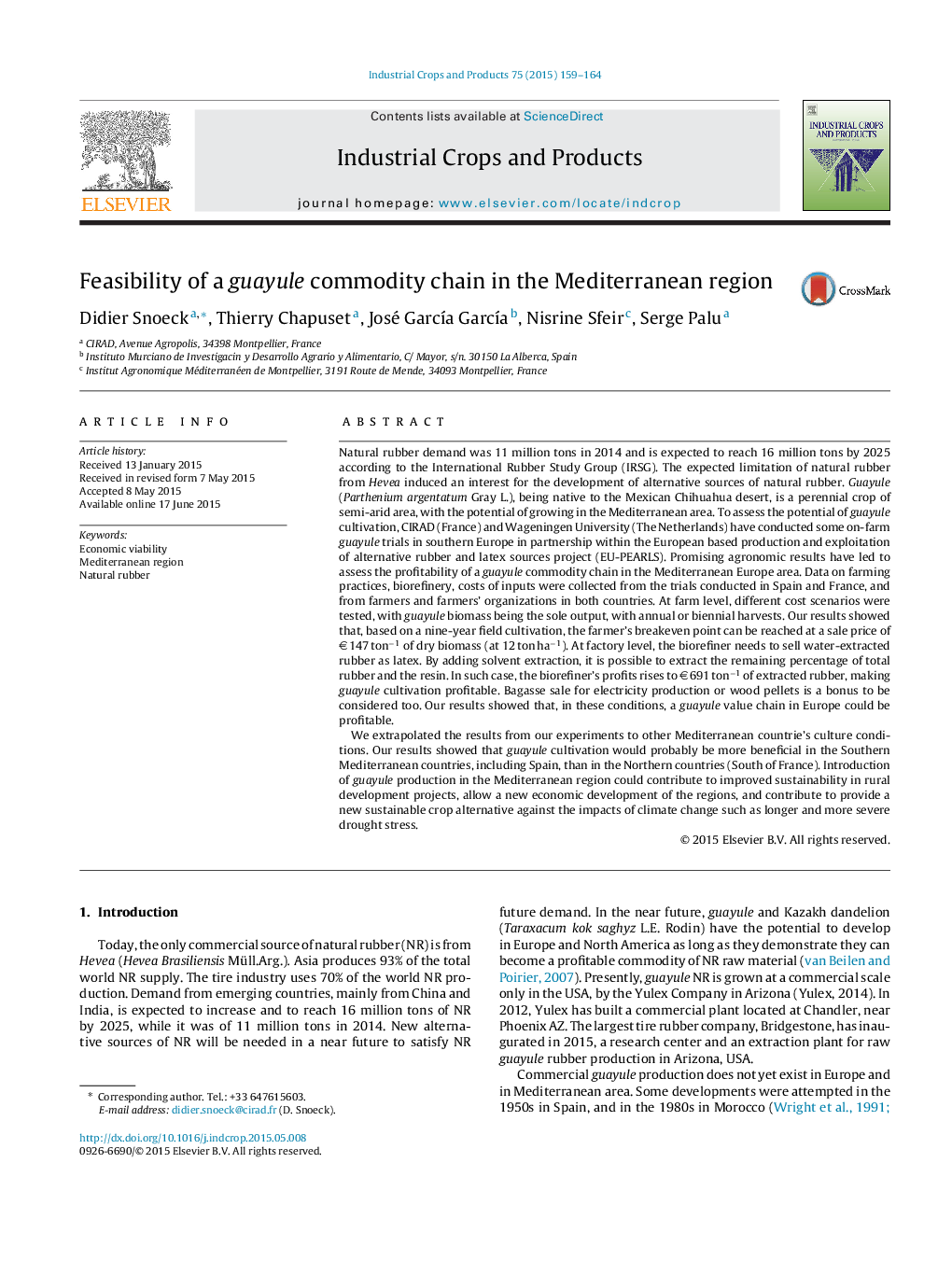| کد مقاله | کد نشریه | سال انتشار | مقاله انگلیسی | نسخه تمام متن |
|---|---|---|---|---|
| 4512839 | 1322172 | 2015 | 6 صفحه PDF | دانلود رایگان |

• The guayule commodity chain does not exist in Europe. We are demonstrating that it is technically and economically feasible.
• The study is based on five years trial in France and Spain, supported by EU (EUPearls project).
• We have demonstrated that guayule can be a potential source of rubber in the Mediterranean, but the resin and bagasse must be included in the process and valued for a positive income.
• Guayule can be an opportunity for other Mediterranean countries having dry areas.
Natural rubber demand was 11 million tons in 2014 and is expected to reach 16 million tons by 2025 according to the International Rubber Study Group (IRSG). The expected limitation of natural rubber from Hevea induced an interest for the development of alternative sources of natural rubber. Guayule (Parthenium argentatum Gray L.), being native to the Mexican Chihuahua desert, is a perennial crop of semi-arid area, with the potential of growing in the Mediterranean area. To assess the potential of guayule cultivation, CIRAD (France) and Wageningen University (The Netherlands) have conducted some on-farm guayule trials in southern Europe in partnership within the European based production and exploitation of alternative rubber and latex sources project (EU-PEARLS). Promising agronomic results have led to assess the profitability of a guayule commodity chain in the Mediterranean Europe area. Data on farming practices, biorefinery, costs of inputs were collected from the trials conducted in Spain and France, and from farmers and farmers’ organizations in both countries. At farm level, different cost scenarios were tested, with guayule biomass being the sole output, with annual or biennial harvests. Our results showed that, based on a nine-year field cultivation, the farmer’s breakeven point can be reached at a sale price of €147 ton−1 of dry biomass (at 12 ton ha−1). At factory level, the biorefiner needs to sell water-extracted rubber as latex. By adding solvent extraction, it is possible to extract the remaining percentage of total rubber and the resin. In such case, the biorefiner’s profits rises to €691 ton−1 of extracted rubber, making guayule cultivation profitable. Bagasse sale for electricity production or wood pellets is a bonus to be considered too. Our results showed that, in these conditions, a guayule value chain in Europe could be profitable.We extrapolated the results from our experiments to other Mediterranean countrie’s culture conditions. Our results showed that guayule cultivation would probably be more beneficial in the Southern Mediterranean countries, including Spain, than in the Northern countries (South of France). Introduction of guayule production in the Mediterranean region could contribute to improved sustainability in rural development projects, allow a new economic development of the regions, and contribute to provide a new sustainable crop alternative against the impacts of climate change such as longer and more severe drought stress.
Journal: Industrial Crops and Products - Volume 75, Part B, 30 November 2015, Pages 159–164